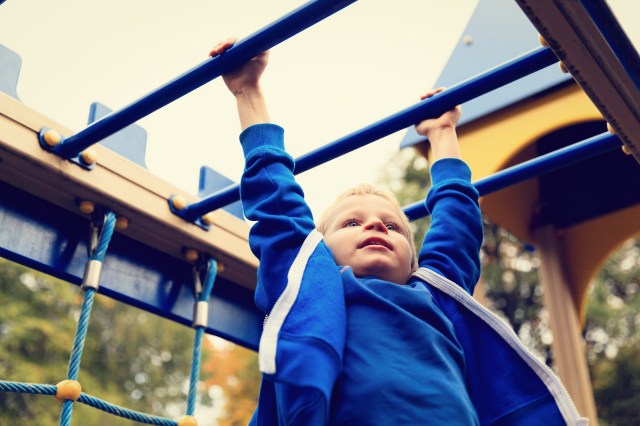As a child, remember when you used to grab your bike and friends and head down to the park to play on the playground for hours? The value of play is undeniable, as it is closely tied to the development of cognitive, motor, physical, and socialization skills, and it is a powerful element in the development of the total child. But what exactly happens when children play and how do the elements involved lead to more significant cognitive development?
I turned to Deborah Stevens-Smith and Jami Murdock and below is what they shared with me about the seven elements of play and how they contribute to the development of the brain and benefit learning in the classroom:
1. Balancing
Balancing, which occurs in many types of play, is essential to the development of reading and writing skills, as well as problem-solving. Kids who develop balance and stability have better body awareness, coordination, muscle strength and endurance. Learning balance also helps children with concentration, which is essential for sitting and paying attention in class and helps develop eye-hand coordination, aiding children in appropriately placing letters and words on a page as they write.
2. Sliding
Playing on the slide and sliding down helps children with spatial awareness, which aids in letter placement when learning to write, by forcing them to judge the right time to start and when to put their feet down at the bottom to stop. It also enhances balance, coordination skills and teaches patience and cooperation, as they wait in line to use the slide. As children decide how to vary the way they slide using different techniques, critical thinking skills are developed as well.
3. Brachiating
Brachiating happens as a child is crossing the monkey bars, swinging with their arms from one hold to another. This type of play strengthens the upper body and develops grip strength, while also increasing endurance, flexibility and eye-hand coordination. Brachiating helps develop fine motor skills, which are necessary for coloring, cutting, writing and painting, as well as the upper body strength required to sit with correct posture. Additionally, this form of play develops kinesthetic awareness, helping kids understand personal space and moving without bumping into things.
4. Spinning
Spinning allows children to experience shifts in their weight, develop depth perception, balance and the cause and effects of motion. Spinning is the most potent form of sensory input that the brain takes in and processes, developing decision-making skills as children must think while in motion. It also enhances vestibular stimulation, which helps the brain decide if it is ready for more learning and can process what’s taught.
5. Climbing
As children climb, they need to make decisions, solve problems, and even visualize the solution, helping them to gain confidence, learn to cope with fear and stress, and develop self-reliance. All the stretching, reaching, swinging, pulling, and pushing with their limbs improves spatial awareness and reasoning, and enhances problem-solving and decision-making skills. Climbing also helps determine a child’s hand dominance, while developing coordinated eye and head movement so that they can perform tasks such as copying from the blackboard and reading across a page.
6. Swinging
Swinging assists the proprioceptive system which involves motor planning and control, detection of the movement position of the body and coordinated movements. It also strengthens arms, legs and children’s core, as it takes a great deal of coordination to make a swing move. Additionally, swinging promotes risk-taking (in a positive way) and develops the fine motor skills needed for writing and manipulating objects.
7. Sensory Development
Sensory experiences through play can stimulate excitement, calmness and alertness that contribute back to the classroom learning environment. The different textures present when playing, such as sand or the smooth metal on slides, provides a smorgasbord of sensory experiences. This sensory stimulation builds neural connections in the brain, supports language development, cognitive growth, fine and gross motor skills, problem-solving and social interaction skills. It also enhances memory, calms an anxious or frustrated child, helps children learn sensory attributes and learning through experience!
Each of the seven elements of play aid in early childhood development that shapes a child’s future learning ability. Understanding the biological impact of these elements will lead to understanding how cognitive growth is enhanced every day through play proving that the power of play transcends from the playground to the classroom!
